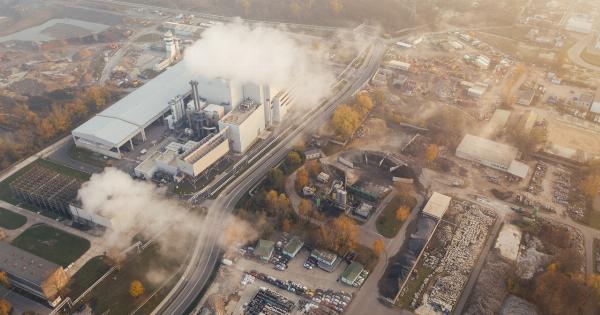A fireplace is often an inviting addition to a home, providing warmth and ambience that can’t be replicated with central heating. However, fireplaces also come with a range of potential health hazards that need to be carefully considered.
These hazards can affect the air quality in your home and cause a range of health problems, particularly for those with respiratory conditions. In this article, we’ll take a closer look at some of the key health hazards of fireplaces and what you can do to minimize the risks.
1. Smoke and Soot
When logs burn in a fireplace, they release smoke and soot particles into the air. These particles can be small enough to be inhaled and can cause a range of respiratory issues, such as coughing, wheezing, and shortness of breath.
They can also aggravate existing respiratory conditions like asthma and COPD.
2. Carbon Monoxide Poisoning
Carbon monoxide (CO) is an odorless, colorless gas that can be produced by fuel-burning appliances like fireplaces. When inhaled, it can lead to headaches, dizziness, nausea, and even death in high concentrations.
It’s essential to have a properly functioning carbon monoxide detector in your home if you have a fireplace (or any other fuel-burning appliance).
3. Respiratory Irritation
Fireplace smoke contains a range of irritants that can cause respiratory irritation. These include volatile organic compounds (VOCs) like benzene and formaldehyde, as well as nitrogen oxides and sulfur dioxide.
All of these can cause coughing, chest tightness, and other respiratory symptoms. For those with asthma, exposure to these irritants can trigger attacks.
4. Particulate Matter
Particulate matter (PM) refers to tiny particles in the air that can be inhaled into the lungs.
Fireplace smoke is a major source of PM, and exposure to these particles has been linked to a range of health problems, including respiratory and cardiovascular disease. PM can also exacerbate existing respiratory conditions like asthma and COPD.
5. Indoor Air Quality
When a fireplace is burning, it can significantly impact the air quality in your home. The smoke and soot particles released by the fire can linger in the air, reducing the overall air quality.
This can be particularly problematic for those with respiratory conditions who are more sensitive to changes in air quality. Poor indoor air quality can cause a range of health problems, including respiratory and cardiovascular disease.
6. Allergies
Fireplace smoke and soot can also trigger allergies in some people. Allergens like pollen and mold spores can become trapped in the smoke particles and spread throughout the home. This can cause symptoms like watery eyes, runny nose, and sneezing.
Those with pre-existing allergies may find that their symptoms get worse when exposed to fireplace smoke.
7. Chimney Fires
Chimney fires are a serious hazard associated with fireplaces. If the buildup of creosote (a byproduct of burning wood) in your chimney becomes too thick, it can ignite and cause a chimney fire.
These fires can spread quickly, causing significant damage to your home. In addition to the risk of property damage, chimney fires can also release large amounts of smoke and soot into the air, exacerbating the health hazards associated with fireplaces.
8. Wood Smoke
While many people enjoy the smell of wood smoke, it can be problematic for those with respiratory conditions. Wood smoke contains a range of toxic chemicals, including benzene and formaldehyde, that can cause respiratory irritation.
Inhaling wood smoke can also exacerbate existing respiratory conditions like asthma and COPD. It’s important to ensure that your fireplace is properly ventilated to minimize the amount of wood smoke released into your home.
9. Children and Pets
Children and pets are particularly vulnerable to the health hazards of fireplaces. Children may be more likely to inhale smoke particles, and exposure to poor indoor air quality can impact their lung development.
Pets may be sensitive to changes in air quality and may also be at risk of burns or other injuries from getting too close to the fire. It’s important to supervise children and pets around the fireplace and take steps to minimize their exposure to the hazards associated with it.
10. Asthma and COPD
For those with asthma and COPD, exposure to the health hazards of fireplaces can be particularly problematic. These conditions can be exacerbated by exposure to smoke, soot, and other irritants associated with fireplaces.
It’s important to take steps to minimize the risk of exposure, such as ensuring proper ventilation and using cleaner burning fuels like natural gas where possible.
Conclusion
While fireplaces can be an inviting addition to a home, they also come with a range of potential health hazards that need to be carefully considered.
From smoke and soot to carbon monoxide poisoning and respiratory irritation, the hazards associated with fireplaces can impact the air quality in your home and cause a range of health problems. Those with pre-existing respiratory conditions like asthma and COPD are particularly vulnerable to these hazards and should take steps to minimize their exposure.
With proper precautions, however, it is possible to enjoy the warmth and ambiance of a fireplace without putting your health at risk.


























